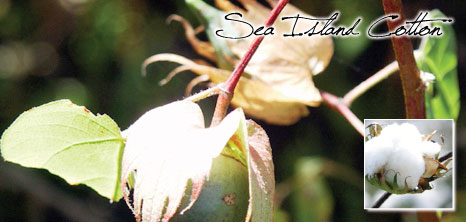|
Sea Island CottonThe cotton industry got started by the the Arawaks and the Caribs over 2000 years ago. Early settlers to Barbados needed a cash crop and cotton seemed to be the ideal crop at the time. The current strength of the Sea Island Cotton industry is not as prevalent as it was back in the 18th century when a heavy tonnage was reached based on the propelling demand from the British textile industry.
The Cotton Factory in Barbados was based in historic Bridgetown and was the base at which cotton was manufactured on the island. A decline in cotton production in Barbados was as a result of the quick pace in which cotton production soared in the United States of America.
There have been attempts to resuscitate the cotton industry in Barbados to a place close to where it once was but efforts have proven futile.
Quality Cotton at its BestThe high-grade West Indian Sea Island Cotton (WISIC) is long, strong and silky, making it more expensive than the next best grade cotton available. This species of historic significance, Gossypium barbadense, is the source from where all other plants in the Eastern Islands of the Caribbean are sown from.
Barbados is at quite an advantage when it comes to producing cotton as the island benefits from annual rainfall, bright sunshine and envious Trade Winds that bring to life this very astonishingly soft and rare cotton. A cotton that carries a consistency of purity and softness quite unlike any other in the world.
Farming ProcessCotton in Barbados is harvested by hand and done so with the greatest care, attention and the strictest guidelines made available. Crop rotation is implemented in an effort to preserve the nutritional contents found in the soil.
Harvesting in Barbados takes place around mid-February when the cotton is placed in huge machines called a Gins. At this point, it is shelved of its seeds and starts to take on a semblance of silk. The seeds are now accumulated and sorted and cracked from whole seeds. Whole seeds are purchased by farmers for the purpose of planting their next crop, while cracked seeds are crushed and used by dairy farmers for the purposes of animal feed additives which aid in the quality of milk they produce.
Cottonseed Oil is a by-product of crushed seeds that are then bottled and sent off for refining.
In an effort to maintain high standards, based on the vast experience that can be found in Europe, the Ginned cotton is shipped to Switzerland for spinning of yarn and to Italy for weaving some fabrics.
Further information on how Sea Island Cotton is produced on the island of Barbados, can be sourced at the following website http://www.eccicotton.bb or by contacting them at telephone (246) 433-3108 or Email: info@eccicotton.bb
|



